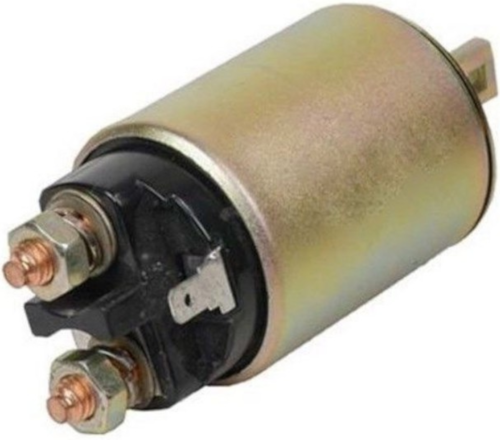Electronic Vehicle Architecture
The Electronics Industry has had the fastest growth in the shortest amount of time, when compared to any other industry worldwide. But before I expound on that, let me just say that, the invention of numerous mechanical contraptions during the late 1800s, like James Watt's steam engine for example, started the transition towards new manufacturing processes which collectively gave rise to the Industrial Revolution. Much later Samuel Finley Breese Morse invented the single-wire electric telegraph system and developed the Morse Code.
A bit of History
Sometime thereafter Alexander Graham Bell invented the first practical telephone system. Their's and the collective efforts of so many others, without discounting anyone's inventions and efforts, changed telecommunications forever. Ancient records show that the first streets of Baghdad were paved with tar, that the Babylonians used asphalt to construct the walls and towers of Babylon. The I-Ching even bears testimony to the fact that the cites of China used oil, extracted in its raw state some 2000 years ago before refining was first discovered. Implying that the petroleum industry is not new, but that the current status of petroleum is a key component of politics, technology and society today.
No tot digress, tar, crude oil and pitch, were used as a sources of fuel long before paraffin was even distilled from it. The thin distilled paraffin was normally used as fuel for lamps whereas several hundreds of years later, the thicker residue was used to lubricate machinery. In and around the time when oil/gas/fuel/petroluem was extracted from coal, Étienne Lenoir successfully built the internal combustion engine and innovated by Nikolaus Otto, who became famous for successfully developing the compressed charge internal combustion engine - the Otto engine.
Assembly lines
Henry Ford on the other hand wasn't an inventor nor an innovator as many have been led to believe, but he was rather a business magnate and a captain of industry, who formed the Ford Motor Company, and sponsored the development of the "assembly line technique" for vehicle mass production. One can therefore confidently say that their combined efforts, without diminishing any other contributor's efforts by the very least, over a period of some 200 years, are partially responsible for the social changes and economic development that shaped societies that we live in today. This was the infancy of the Automotive industry.
However, compared the Industrial revolution, modern day electronics would be equivalent to a Global Coup. Initially there was the vacuum tube aka the electron tube, colloquially known as a valve. It gave way to the trusty transistor and discrete components which gave rise to the analogue Integrated Circuit (IC) aka chip, followed by digital Transistor/Transistor logic (TTL) chips, followed by complementary metal oxide semiconductors (CMOS), then digital semiconductors like ROM (digital read only memory), RAM (random access memory), EEPROM (electronically erasable programmable read only memory), followed by large scale integration chips and VSLI (Very Large Scale Integration Chips).
Electronics and Software
With the advent of multilayer circuit boards and surface mounted technology, microcontroller SoC (system on a chip) and microprocessors (µP) became pervasive. Assembler language was superseded by several high level languages for programmable chips and software programming sat at the heart of most electronic devices and electronic systems. All of this happened in 50 years of electronics as opposed to 200 years of mechanical devices.
So you may ask, what has all this history to do with Volkswagen, Audi, Seat and Skoda and for that matter all other modes of transport from plans to trains? Well the short answer, everything! Much like the Industrial Revolution with its mechanical ingenuity; cars and planes were also predominantly mechanical since its inception, its mechanical ignition system was prone to imprecise ignition timing, resulting in improper fuel mixture burn, thus increasing its exhaust pollution.
With the rise of telecommunications, so did the electric wires, and electrically controlled gauges, relays and switches in cars and planes multiplied. The ever inflating cost of gasoline then triggered the invention of CDI (Capacitive Discharge Ignition systems) which is in fact the first type of electronic contraption integrated into the ignition system of a vehicle in order to, more precisely control its ignition timing, making it more fuel efficient.
These devices were available as add on kits and not produced as standard equipment in cars at the time. The preferred standard equipment was the IDI (inductive ignition system) and is the most common ignition system found on all cars built prior to 1980. It used a coil and distributor incorporating breaker points in its ignition system that was prone to ware-out due to arcing on contact. During the 80's engines still used a coil and distributor to achieve dwell but it was somewhat computer controlled and by the 90's the automotive computer evolved to ignition modules and the ECU, replacing the coil with a power pack.
However, with the constant and ever increasing price of gasoline and looming environmental concerns centred around vehicle exhaust pollution, the automotive industry then accelerated its research and development into newer more compact fuel efficient power-train systems capable of higher power output with enhanced robustness with a open policy towards alternative fuels.
New generation cars
So, by the 90's the Insulated-Gate Bipolar Transistor (IGBT) was introduced into the ignition system as discrete component connected to the ECU called OBD - On-Board diagnostics. By 1993 the CAN protocol was standardized by ISO which led to its increased popularity and adoption across the automotive industry. By 1996 OBD had evolved to OBD-II and the discrete IGBT evolve into a IGBT module integrated into individual coils itself. Starting from Y2k ignition systems were all ECU based but power packs were replaced by a dedicated coil per cylinder, yet cloning the use of an Insulated-Gate Bipolar Transistor (IGBT) as discrete component connected to the ECU.
Communication Buses
From 2004 to 2010 the discrete Insulated-Gate Bipolar Transistor (IGBT) integrated into individual ignition coils evolved to a smart IGBT alongside the ECU. The automotive ignition system had undergone a complete revolution which contributed significantly to the system’s efficiency, exhaust pollution reduction, and robustness. By which time the use of wires had been minimized in preference of a bus network which supported vehicle weight reduction and vehicle cost. Copper wire have been replaced by fibre optic cable to facilitate faster communication. Some of the most important bus communication systems are CAN-Bus, Lin-Bus, MOST and FlexRay.
Actuators and sensors, electronic control modules, Can-Bus and the ECU collectively facilitating Electronic Power Control (EPC) aka electronic throttle control (ETC), Electronic Exhaust gas reticulation (EEGR), Electronic Valve Control (EVC), Electronic fuel injectors and so much more, are just a small part of the overall influence that electronics have had on all vehicle engines. Other subsidiary programmable electronic modules which are smaller computers in their own right now permeate cars, bikes, planes and boats, all connected together by at least three network systems.
CAN-Bus is a multi-master twisted pair wire system reserved for high speed control systems like brakes, whereas LIN bus is a single master, single wire system for low level communication for use by the rain sensor, sun roof, internal heating, and the infotainment-bus, is a slow-speed system reserved for radio, GPS, internet communication, etc. Each system communicating with each of its nodes in its provided protocol, each having different data transmission rates. By incorporating this level of electronics into cars, it has vastly improved stichometry and overall engine performance, its economy, its driveability and its safety besides reducing emissions.
Inept electronic knowledge
However, few mechanics know sufficient about electronics with its combinational logic, digital multiplexing, bits and bytes, start and stop bits, fixed frames, software, etc to repair these cars packed with intercommunicating electronic modules. Even though scan tools have vastly increased their chances at successful repair, not knowing how to interpret fault codes further disadvantages them, not to mention how frustrating it is for the vehicle owner who gets stuff around by incompetence. And here I’m even refereeing to the "Automotive Technicians" employed by their respective automotive agents, who are more often than not incapable of repairing vehicles fitted with OBD-II. I'm quite sure there are several hundred if not thousands of VW owners who would concur. How is it even expected for the DIY mechanic to fix it him or her self if the agents can't. Needless to say that with continuous improvements comes great complexity and their successful strategy to part us with our hard earned monies.
Diagnostic Trouble Codes abbreviated as DTC have been around for approx 30 years and is a component of OBD-II (onboard diagnostic system ver.2). These codes can be found stored in the ECU's non-volatile memory for later retrieval by way of a scan tool. DTCs are displayed specific to the kind of problem that the system can or does detect from inside of a car engine/transmission, chassis, body or network.
Scan codes
In reality DTC codes can assist "automotive technicians", DIY mechanics and car owners to understand the problem with the car and possibly point them towards the nature of the problem or at the very least the system concerned. Bearing in mind many DTCs are generic but many of them are manufacturer specific and is best interpreted by consulting the car's manual. Generic codes are defined by the EOBD / OBD-II standard and will therefore be the same for all car manufacturers.
But, let me break it down to for you. All diagnostic codes are alphanumeric as in P0XXX. It start with a letter followed by 4 numbers, as in P0303. This initial letter is P but can also be either B, C or U. They stand for Powertrain, Body, Chassis and Network respectively. The first numeral following the letter signifies whether the fault is generic of manufacturer specific. Since its a 0, its a generic code but if had a 1 then it would be manufacturer specific. The number 3 following the first 0 can be any numeral between 1 and 9. This number directs you to the subsystem of the car and is as follows.
Px1xx Air and fuel metering
Px2xx Air and fuel metering
Px3xx Ignition system and misfires
Px4xx Auxiliary / additional emission control
Px5xx Speed control and idle regulation
Px6xx Communication /computer output signals
Px7xx Transmission
Px8xx Transmission
Px9xx Control modules, input and output signals
The final two numbers (xx) designate the individual components / sensors /actuator that threw the error. For example P0300 says, it's a powertrain error, it's generic in nature, it's in the ignition system and it's a random misfire.
Whereas P0301 says misfire by cylinder No. 1,
Whereas P0304 says misfire by cylinder No. 4,
Whereas P0308 says misfire by cylinder No. 8,
Whereas P0312 says misfire by cylinder No. 12,
Likewise P0403 says, its a powetrain error, it's generic in nature, it's in the auxiliary / emission system and that the "Exhaust gas recirculation control malfunctioned"
Likewise P0501 says, its a powetrain error, it's generic in nature, it's in the speed control/regulation circuit and it's the "Vehicle speed sensor is out of range".
Like wise P0656 says,its a powetrain error, it's generic in nature, its in the computer/communication system and that its the "Fuel level output electrical sensor/circuit"
Then there are also VAG specific 5 number numerical codes that coincide with P,B,C and U codes, like 16692 which coincides with P0308 (Misfire Detected on Cylinder 8)
And 17026 which coincides with P0642 (Knock Control Control Module Malfunction)






